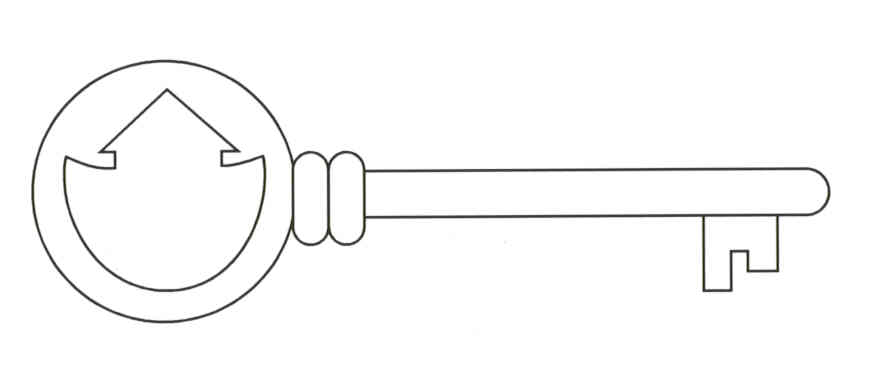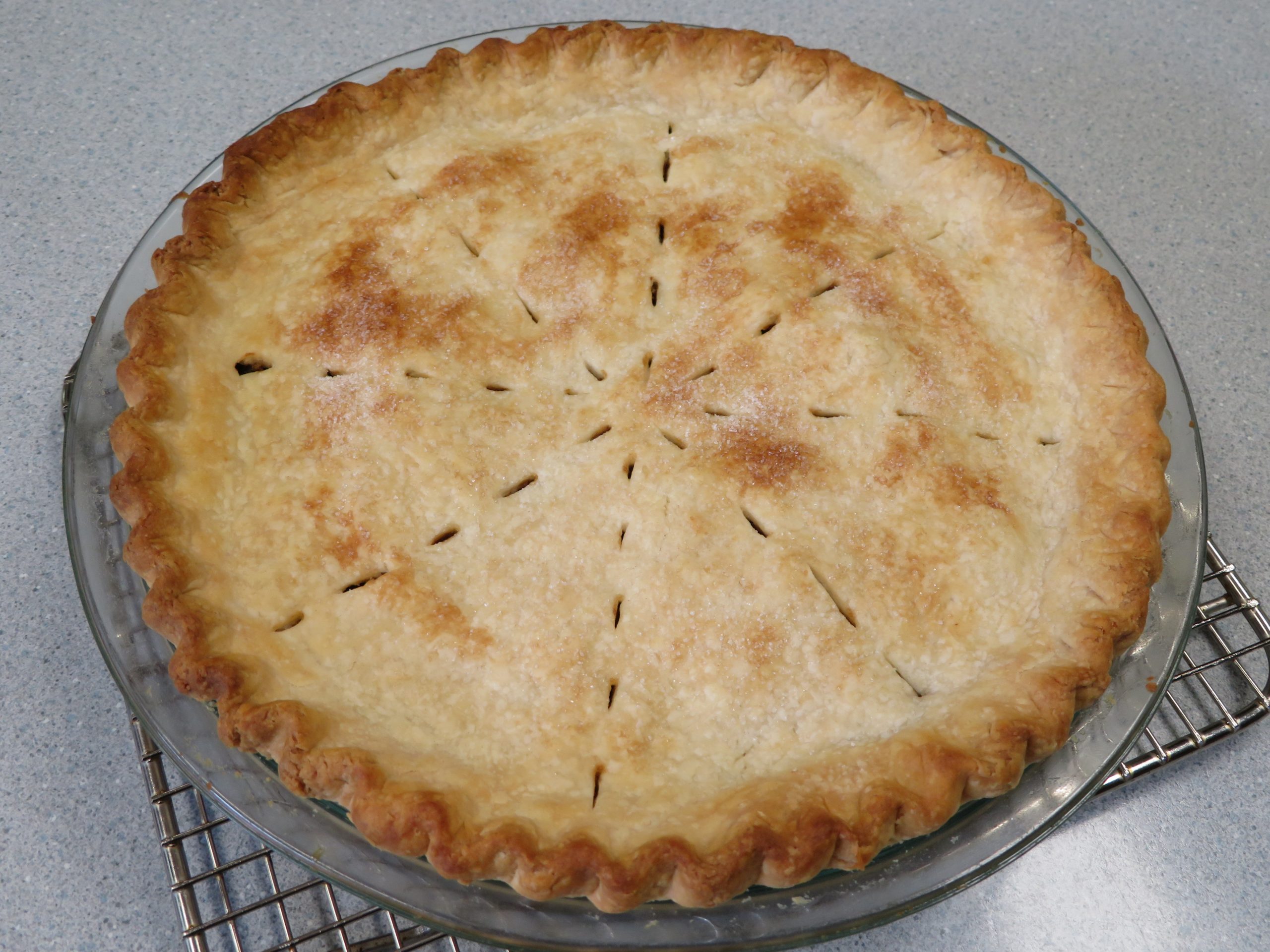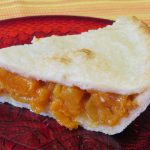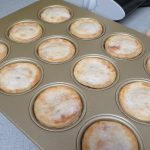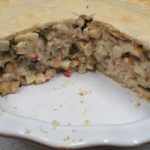This is how I learned to make pie pastry in Food Science lab in college. It’s a great pastry and always turns out flaky IF you cut in the shortening very well and don’t overwork the dough. I like to use a pastry blender with blades, and not wires, to cut in the shortening.
Silicon pastry mats are very nice for making pie pastry. Use one on the bottom and wax paper on the top (so you can see through it). The pastry peels off nicely.
PIE PASTRY (Pantry Cooking: Unlocking Your Pantry’s Potential, page 118)
1 cup all-purpose flour
Heaping 1/4 teaspoon salt
1/3 cup shortening
2 tablespoons water
Whisk together flour and salt. Cut in shortening until it is the size of small peas or smaller.

With a fork, stir in water 1 tablespoon at a time until well mixed.

Using hands, gently squeeze the pastry together until it adheres in a ball.

Flatten the ball on a sheet of waxed paper or a silicon pastry mat. Cover it with a second sheet of waxed paper and roll it out to the desired size.

Peel off the top paper and turn the pastry and the bottom sheet of waxed paper over into a pie plate. Carefully peel off the paper. Push the pastry gently to fit in the pie plate. Trim edges to 1/2-inch from the pie plate edge and fold the pastry under so that the fold is flush with the pie plate edge. Crimp or flute edges. Fill and bake according to the pie recipe, or prick the bottom and sides with a fork and bake at 425o F for 8 to 10 minutes.
For a two-crust pie, double the recipe. Trim the bottom pastry to the plate edge. Trim the top pastry to 1/2-inch from the edge and fold it under the edge of the bottom pastry. Crimp or flute edges.

NOTE: If your climate is very dry, you may need to add an extra teaspoon or two of water.
When tripling the recipe, add an extra tablespoon of water for a total of 7 tablespoons of water.

Recipes using Pie Pastry:
